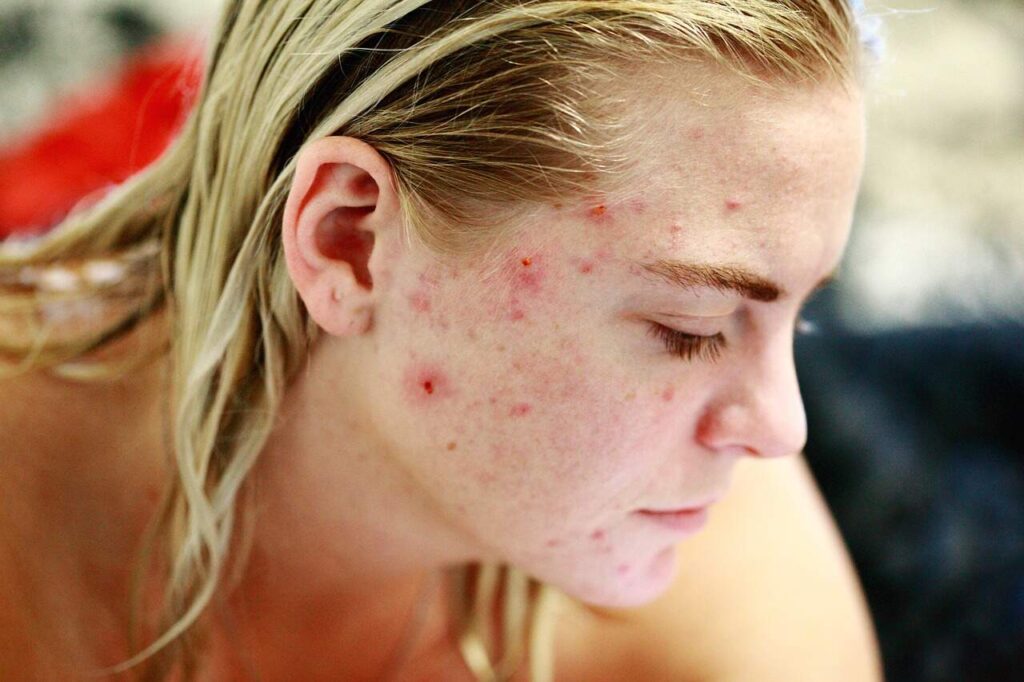
Acne is more than just a cosmetic issue; it often reveals insights about your body’s internal health. When pores clog, we see painful spots and pimples, mostly on the face. But did you know the precise location of your acne can indicate underlying causes?
Face mapping acne is a trendy practice and is a diagnostic method rooted in ancient Chinese medicine. It is now backed by modern science, which decodes these breakouts to guide targeted, effective treatments. This powerful approach will help you understand what causes acne, what your skin is trying to tell you, and how to enable clearer, healthier skin over time.
Face mapping acne links the location of breakouts on your face to possible internal or external causes. This method, which originated from traditional Chinese and Ayurvedic medicine, has gained headway in modern dermatology due to its ability to personalize acne diagnosis and treatment effectively. The face is divided into zones such as the forehead, eyebrows, cheeks, nose, chin, and jawline, each associated with different factors like hormones, liver health, diet, stress, and effective skincare habits.
Currently, in 2025, advanced AI technologies and machine learning algorithms (MLA) are enhancing the accuracy of face mapping by analyzing patterns, acne types, and skin physiology. These technologies now help to detect subtle changes and inform personalized treatment plans, revolutionizing acne care.
Acne around the hairline and temples, often called pomade acne, results from oil, dirt, and hair product buildup in this region. People who frequently use hair products, wear scarves or hair bonnets are more prone to this. Accumulated oils and dirt clog pores, which leads to breakouts in this area. Maintaining hygiene by washing hair regularly and avoiding heavy hair products near the hairline can help prevent flare-ups.
Source: Pexels
The T-zone consists of the forehead, the nose, and chin, these areas are rich in sebaceous glands that produce more oil. Excess sebum combined with stress and fatigue worsen acne in this area, especially for those with oily skin types. A recent study by the University of Mississippi confirms that stress significantly contributes to acne flare-ups in the T-zone by increasing oil production and inflammation. Using non-comedogenic skincare products and managing stress through sleep and relaxation techniques are recommended for controlling acne in the T-zone.
Acne around the eyebrows and the space between them often results from clogged pores due to dirty makeup brushes, cosmetics buildup, or environmental toxins. While less common, this breakout area may sometimes indicate liver stress caused by alcohol consumption or poor diet, affecting skin detoxification. Keeping makeup tools clean and moderating alcohol intake can reduce breakouts here. Nutritional support for liver health also plays an essential role in maintaining clearer skin in the eyebrow region.
Cheek acne has several causes, ranging from external factors to internal hormonal changes. Dirty pillowcases and sheets harbor bacteria and oils that transfer onto skin during sleep, leading to breakouts. Additionally, hormonal imbalances and frequent touching of the face contribute significantly to acne in this area. Regularly changing bedding and reducing face contact, along with addressing hormonal fluctuations, can improve acne severity on the cheeks.

Source: Pixabay
Acne along the jawline and chin is closely linked to hormonal changes, often surfacing before menstruation or during hormonal shifts. Stress further aggravates these breakouts by influencing hormone levels and immune responses. Inconsistent skincare routines may also worsen jawline acne. Experts recommend incorporating stress management practices like calming and regular exercise, alongside steady skincare habits, to reduce hormonal acne for clearer skin.
Making lifestyle changes can help in managing acne, especially when combined with the right treatments. Small adjustments in your daily habits can make a big difference for acne on different parts of your face.
These adjustments, combined with the face mapping technique, can empower individuals to take proactive and personalized measures for clearer skin over time.
Acne face mapping is a valuable tool that helps women understand the unique factors behind their breakouts, from hormonal changes and stress to diet and skincare habits. By pinpointing the causes of acne on different areas of the face, you can create a personalized skincare routine and holistic acne treatment plan designed just for you. With advancements in AI and dermatological research, acne face mapping offers smarter, more targeted solutions that go beyond traditional treatments. Combining these insights with healthy lifestyle changes can lead to clearer, healthier skin and a boost in confidence. Embrace acne face mapping to take control of your skin’s health and reveal your natural glow.